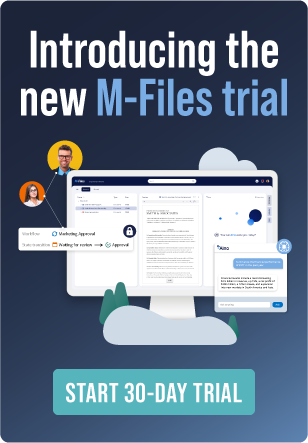Merging Structured and Unstructured Data for Knowledge Work

Organizations depend heavily on data to make informed decisions, create strategies, and promote innovation. Data, broadly classified into structured and unstructured, offer valuable insights that drive efficiency and customer engagement.
Structured data are machine readable and can be grouped efficiently, simplifying analysis and retrieval. Unstructured data lack organization and exist in emails, social media, and documents. This type of data makes the overall data landscape more complicated. Knowing how each set depends on the other is essential to understanding why structured and unstructured data matter in knowledge work.
Unraveling Structured Data for Effective Knowledge Work

Structured data is information that's organized in a set format, making it easy to process and leverage efficiently. An example is a database containing information in rows and columns, ensuring efficient storage and retrieval. Spreadsheets also utilize structured data to present information clearly, helping with calculations and sorting. Other examples include:
- ERP (Enterprise Resource Planning) systems
- CRM (Customer Relationship Management) systems
- SQL databases
- XML (eXtensible Markup Language) files
- JSON (JavaScript Object Notation) files
- Tables in HTML documents
- Data warehouses
- Metadata systems
Orderly data plays a crucial role in driving seamless communication between computers. Machines excel at accurately sharing information across various systems and communication platforms.
Structured data is crucial for regular knowledge tasks. They reliably enhance way decision-making information management. Organized data make finding, exploring, and optimizing existing workflows simple and make everyday tasks and plans more efficient.
Exploring Unstructured Data for Knowledge Management
Unstructured data is information without a set structure or organization. Data are raw and encompass several daily digital activities such as:
- Text documents
- Emails
- Social media posts
- Audio files
- Video files
- Images
- PDF documents
- Presentations
- Blogs
- Web pages
By 2025, the International Data Corporation (IDC) predicts around 80% of global data will be unstructured. Large corporations have already surpassed this threshold.
Unstructured data is disorganized, making it tricky to understand. Smart technology extracts and analyzes complex information in different unstructured data formats. Identifying and filling knowledge gaps in unorganized data is crucial for informed decision-making informed and enhanced efficiency.
Processing messy data has historically been a challenge in knowledge work. With physical information, workers had to sort and make sense of unorganized data with manual work. Digital transformation created search engines and content management systems to handle more digital information.
The Impact of Emerging Technology like AI and Automation
Technology has changed how knowledge work and innovation understand, manage, and use data. A notable development is the ascent of large language models (LLM) powered by artificial intelligence (AI). These models can comprehend and generate text like humans and excel at handling disorganized information. AI-driven automation software has improved data processing, organizing unstructured data in knowledge work.
Traditional boundaries between structured and unstructured data have become fluid thanks to advanced technology. They work together to integrate knowledge work processes more smoothly.

Language models interpret and generate text, connecting different data types and helping manage information effectively. Professionals, such as knowledge workers, use structured and unstructured data for complex problem-solving and high-level decision-making. Merging them boosts knowledge capture.
Pros and Cons of Implementing a Process Automation System
Navigating unstructured data with generative AI has advantages and hurdles, including:
| Benefits | Challenges |
|---|---|
| Enhanced understanding of nuanced information | Increased computer-related costs |
| Extraction of meaningful insights and improved overall efficiency | Complexity in training |
| Automation of knowledge work for repetitive tasks | Need for specialized expertise in applying and managing AI resources |
| Improved accuracy in healthcare diagnostics by analyzing clinical documents | Time investment in learning and adapting AI models for the business's needs |
| Tailored marketing strategies based on consumer sentiments extracted from social media | Initial investment in training and implementation |
| Cost-effective knowledge work automation | Ethical considerations, including addressing potential biases |
Applying and managing AI resources require collaboration and shared insights, which help overcome challenges and maximize the benefits of artificial intelligence in knowledge work.
Managing Knowledge Work and Innovation in the Digital Era
Advances in technology make it easier to combine structured and unstructured data in work processes. Digital transformation enables knowledge workers to utilize AI for unstructured data. This shapes the future of automation and gives companies a competitive advantage. How? Through decision management, machine learning, and knowledge automation.
Structured data remains essential for conveying meaning and intent. Unstructured data opens avenues for creativity and innovation. Knowledge workers work with both data types. They must understand the differences.
FAQ
What distinguishes office automation from knowledge work systems?
An office automation system performs basic tasks such as data processing. A comprehensive knowledge work system manages more complex tasks.
Tasks include decision-making, problem-solving, and creativity. Automation of knowledge work involves leveraging structured and unstructured data. The result? Better informed insights. Combining the two data types allows organizations to enhance efficiency and productivity.
Why should we embrace the automation of knowledge work?
Automation of knowledge work enhances efficiency. How? By managing repetitive tasks. This allows professionals to target problem-solving and decision-making. Automation accelerates data processing. It also improves insights, productivity, and overall organizational effectiveness. This develops a robust knowledge base.
How does the automation of knowledge work disrupt traditional workflows?
By introducing advanced technologies like AI. This transforms information processing. Disruption brings benefits, including enhanced efficiency. It also creates challenges such as skills gap issues through specialized expertise. Finally, organizations must address ethical implications in AI implementation.
AI-Driven Automation
M-Files helps automate the entire knowledge work process. This includes document creation and management, workflow automation, external collaboration, enterprise search, security, compliance, and audit trails.
Powered by M-Files Aino, a powerful generative AI technology, M-Files helps organize information, understand the context of documents, and interact with their organization's knowledge base using natural language.




